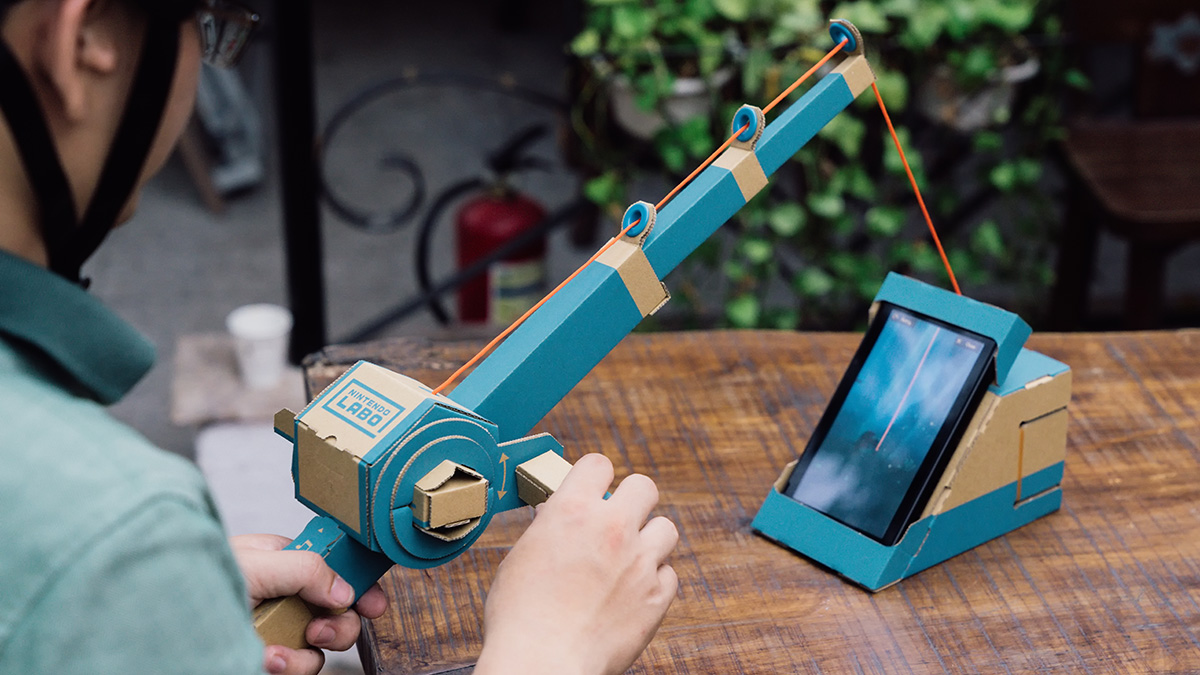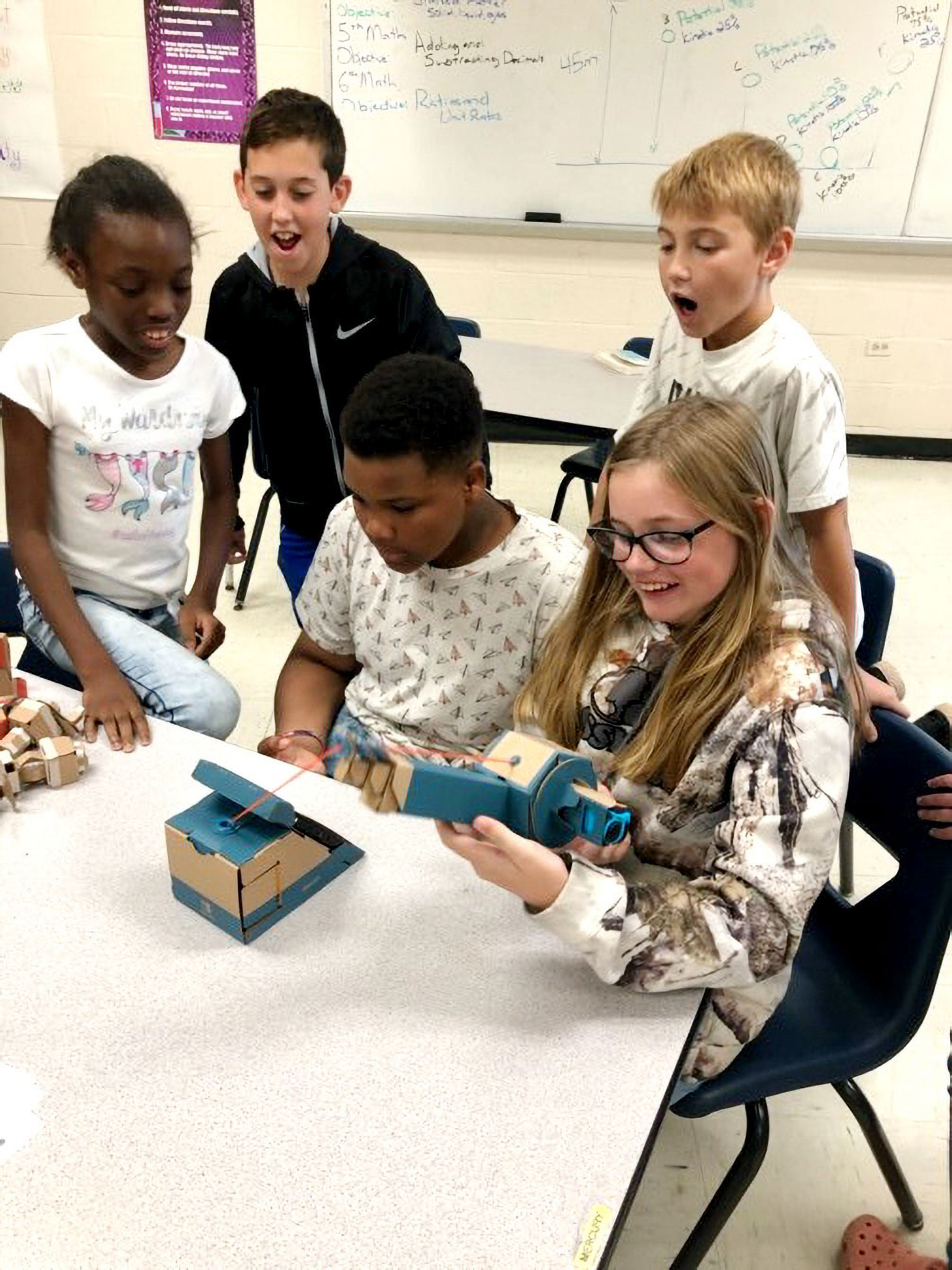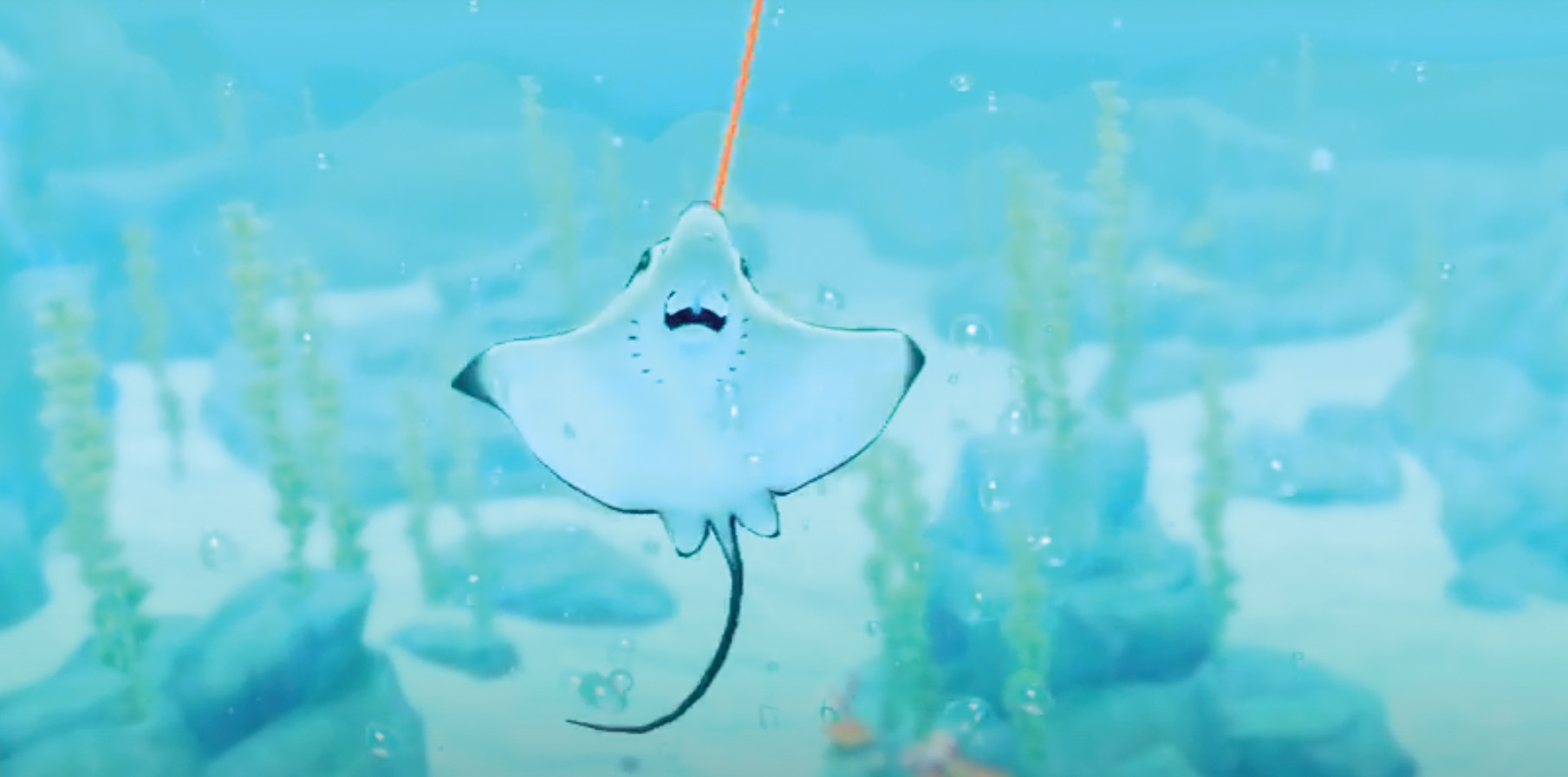feature
Turning on the Three-Dimensional Switch
Using gaming technology to expand children’s science thinking
Science and Children—September/October 2021 (Volume 59, Issue 1)
By Zach Hurdle, Angela Stanford, Katy Nix, and Nick Perry

In an ever-increasing technological society, teachers have now, more than ever, a vast offering of educational technologies made available for classroom use. However, the time necessary for vetting and developing rigorous lessons with the usage of such technologies can be overwhelming for a classroom teacher. Still, teachers need the opportunity to facilitate valuable inquiry-based and project-based learning (PBL) environments in classrooms through educational technology for effective STEM education (Pedaste et al. 2015; Hannon et al. 2012; Hall and Miro 2016). One study suggests that a vital aspect of PBL, for example, is “making available a teaching method including student acquisitions and implementing a teaching method where students will be responsible for their own learning” (Ergül and Kargin 2014). Technology, and specifically video games, may be a new-age method to accomplish this goal. Learning gamification is the process of incorporating gaming aspects into a lesson plan in order to foster student motivation and creativity (Kapp 2012). Can we use case studies to determine how effective this process can be?
To answer this type of question, we selected one third- and one fifth-grade classroom teacher to determine how engaged students could be in the three dimensions of science learning, specifically through the use of the Nintendo Labo Variety Kit. Nintendo Labo is a particularly versatile game system aimed at a younger age demographic than most video game consoles. The Labo extension provides a buildable, engineering task for children to follow along using included materials to construct all sorts of “Toy-Con” creations that interact with game software: mini-pianos, remote control cars, virtual reality blasters, steering wheels, robot gloves, fishing rods, motorcycles, etc. Nintendo designed Labo with the intent to foster principles of engineering, physics, and basic programming to younger students.

Labo Lessons in the Classroom
Through a grant-funded elementary and middle school professional development, teachers from various schools in our region participated in a Nintendo Labo workshop. The purpose of the workshop was to provide teachers the time to actually test various Labo kits and determine their educational quality. After receiving teacher feedback regarding usefulness and potential effectiveness in the classroom, two of the teachers volunteered to take the Nintendo Switches and Nintendo Labo Variety Kit into their classrooms to provide real-time classroom evidence of three-dimensional learning.
For the purpose of this article, we will use the fishing rod Toy-Con from the Labo Kit, focusing on the application aspect rather than the building process, to describe examples for how both teachers generated lessons and provided much feedback in regards to their students’ experiences and learning outcomes. Keep in mind that the fishing rod (as well as the other pieces in the kit) need to be assembled. Teachers can choose their own selection process for how to get these built: organized groups, exemplary students, school clubs, volunteers, or constructing before class—that is, creative non-instructional times (Note: Age-appropriate safety measures and procedures were followed. See NSTA Declaration for Safety and School Science Instruction at www.nsta.org/about/positions/safety.aspx). For the students, using the fishing rod is a real-life experience—they choose the bait, they choose the ocean level. Students feel vibrations and tugging on the line, including a full reeling experience where the fish can realistically be caught or not. For example, some species (such as the shark) are very difficult to catch, while other species (such as the mackerel) are prevalent and incredibly easy to catch. Students were engaged and naturally investigative from a standpoint of competition and the challenge of obtaining rare species using trial-and-error strategies. For the fishing rod toy-con, these teachers created rigorous lessons on their individual grade levels that encompassed many life science disciplinary core ideas (DCI). However, the greatest reward came when the teachers themselves observed how their students utilized the science and engineering practices (SEP) and crosscutting concepts (CCC) to further guide their own learning experiences.
Teachers’ Perspectives with Nintendo Fishing Rod
Third-Grade Classroom
The third-grade lesson began with a discovery investigation. Students were paired and cycled through the Nintendo station where they utilized the pre-assembled fishing rod. Students were prompted to make notable observations based on the following guiding question concerning the ocean and animal habitats within the different layers of the ocean through this virtual ecosystem: “How do individual organisms function within the ocean ecosystem?” Students created a data collection chart in their science journals to document the data collected from various fishing expeditions over a three-day period. Suggested categories included: animal, length, weight, habitat, food source, etc. The class tabulated their results in a bar graph, reporting frequencies of each animal caught across many color-coded student groups.
As students organized data in their table groups, they used discussion prompts and journal entries to begin analyzing the information and creating inferences. The representation of some data left students with questions that they documented as unanswered, such as “Why are there so many mackerels compared to other species?” or “Why is it so difficult to catch a shark?” Additionally, students were using many crosscutting concepts while analyzing the material they had collected themselves, giving them ownership of the data. For example, the data organization allowed students to see patterns that developed naturally through their hands-on experience and further developed causal reasoning regarding methods to catch a particular fish in future attempts. Students used cause and effect to make connections between food chains and why certain species remain in specific zones and other species, who are predators of smaller fish species, visit those zones for feeding.


Fifth-Grade Classroom
The fifth-grade teacher developed a unit of study focusing on energy flow through ecosystems. Students were introduced to food webs and energy pyramids through the use of the Nintendo Labo Fishing Rod. Students were prompted to conduct multiple fishing trials to experience how different fish could successfully be caught. As they ran through these trials, the accumulated evidence helped students form the questions they needed to improve their success rate at catching fish moving forward. During this process, students gained a greater understanding and ownership of important scientific concepts that might not have otherwise been fully grasped. They mainly explored the research question: “How does energy flow within an ocean ecosystem?” Student inquiry led to the understanding that the higher they go up in the pyramid, the less energy that is transferred. Students then inferred that the tertiary consumers received the smallest amount of energy transfer compared to the primary consumers at the bottom of the pyramid. During one moment of experimental discovery, a student was reeling in a small fish and to their surprise, a large fish emerged from below and ate the smaller fish from the line. Students quickly made the connection through this realistic event that smaller fish tend to become the food sources for larger fish. Until that moment, it was not necessarily clear that students fully understood the natural order of the food chain in an ocean system. The ocean was seen as a vast system where animals resided and lived peacefully, rather than a complex flow of energy. Additionally, to further develop knowledge, students were prompted to select three different species from their Labo fishing expeditions to conduct research on each species. Students prepared a presentation in detail to identify what level on the energy pyramid that each of their fish species belonged. Students quickly identified patterns among those species in the primary, secondary, and tertiary levels.
Three Dimensions of Science
As we review the three-dimensional classroom with a science context, be aware that plenty of standards also arise in other disciplines, such as mathematics and technology. In our shared tables, we organize the three dimensions that were explored by the sample third- and fifth-grade classroom in this Labo Fishing activity. First, we examine disciplinary core ideas.

As shown in Table 1, students in third grade reinforced the prior DCI of Organization for Matter and Energy Flow of Organisms when they caught certain species and determined what food (bait) was successful in catching the species. This DCI was extended when students actually observed a larger fish species snatch the fresh-caught smaller fish off the fishing line. Students inquired why larger fish eat smaller fish. Students advanced into the Social Interaction and Group Behavior DCI when they noticed larger schools of smaller fish swimming together and larger fish swimming in isolation or much smaller group sizes. Fifth-grade instruction continued to reinforce prior DCIs exhibited similarly from the third grade, but as they selected fish species to further research, Cycles of Matter and Energy Transfer in Ecosystems became more evident. Through the combined usage of the Labo Fishing experiences and the research, students made relatable discoveries about various species’ energy contribution and location in the ecosystem as well as their interdependent relationships in the system as a whole. Next, we will analyze crosscutting concepts.
When third-grade students observed the larger fish swimming in isolation and smaller fish in groups, they recognized this as a pattern and also utilized cause and effect CCC when it came to other behaviors such as swimming, avoiding predators, and catching prey. In both the third- and fifth-grade classroom experiences, students noted observable cause-and-effect relationships among various species. Together, students utilized the patterns and cause/effect CCC to draw conclusions about the ocean ecosystem as a whole. Prior to the real-world application made possible by the Labo fishing expeditions, students did not quite grasp the natural order in an ocean ecosystem. There was the minimalist thinking that all ocean animals coexisted, but not fully understanding that there were different classifications and levels among the species in the system. Next, we analyze science and engineering practices.
When third-grade students first noticed the pattern of repeated occurrences of larger fish swimming in isolation and smaller fish species in larger groups, they used SEPs by analyzing this pattern of behavior and then argued based on the evidence that this behavior was beneficial for survival. Students also used a SEP by analyzing the frequency of each species caught. Based on that evidence, students engaged in argument that smaller species were more frequent in number so they could sustain the balance in the ecosystem as their purpose is to support larger fish populations. On the return of that evidence, students in the fifth-grade classroom further supported the claim that larger fish are less prevalent and thus higher on the food chain. This discovery and use of SEP assisted students in explaining a natural phenomena within the ocean model.
Conclusion
Overall, we were happy with the results from introducing the Labo into the classroom. Remember, this is just one example of how the Labo gaming system can assist teachers with intertwining the three dimensions of science in a relevant and realistic manner. Another positive point that teachers should consider for this particular study was the fact that these particular students in our case study lived in a land-locked state, hundreds of miles from the nearest ocean. Considering the distance students lived from the ocean and the low socioeconomic status of many of their families, these students carried a substantial gap in background knowledge regarding ocean ecosystems prior to this study. Further, these were high-poverty school districts. The third-grade classroom used one console in whole-classroom instruction and/or rotational centers, while the fifth-grade classroom used four consoles (loaned from a local university) in group collaborative lab settings. We found it best to pair each console ($279 each) with one Labo Variety Kit ($30 each). Local educational cooperatives, universities, and federal STEM centers can offer appropriate resources on loan and, in some cases, grants for purchasing such classroom materials. Additionally, there are state- and national-level organizations that offer educators STEM grants.
Whatever the intentions by Nintendo, many of the Toy-Con constructions provided real-life results that we found through our own implementation to prove valuable to teachers who are interested in using these products as a way of including technology into their lessons. We invite readers to share experience with their classrooms, including the fishing rod or otherwise, concerning how Nintendo Labo was used in their classrooms. Students were particularly engaged in this learning method, as many did not have a Nintendo Switch at home. Nick Perry, the fifth-grade teacher, commented, “Students would come in each day asking if they could go back to the Labo project to collect more data because they were so eager to find out more. They enjoyed the inquiry process.” Other potential Labo examples that were tested in the classroom but not included in the scope of this piece, included an infrared-sensing simple car, a calorie-counting robot suit, and a virtual-imprinting bike track application. There are many possibilities with these tools, and we encourage teachers to build these into their units of study when applicable. ●
| Disciplinary Core Ideas. | ||||||||
|---|---|---|---|---|---|---|---|---|
|
| Crosscutting Concepts. | ||||||||
|---|---|---|---|---|---|---|---|---|
|
| Science and Engineering Practices. | ||||||
|---|---|---|---|---|---|---|
|
*This is a Connection to Nature of Science
Zach Hurdle (ZHurdle@uvu.edu) is an assistant professor of mathematics at Utah Valley University in Orem, Utah. Angela Stanford is an associate professor of education at Southern Arkansas University in Magnolia, Arkansas. Katy Nix is a third-grade teacher at Central Elementary School in Magnolia. Nick Perry is a fifth-grade science teacher at Bradley Elementary School in Bradley, Arkansas.
Biology Crosscutting Concepts Disciplinary Core Ideas Environmental Science Science and Engineering Practices Three-Dimensional Learning


